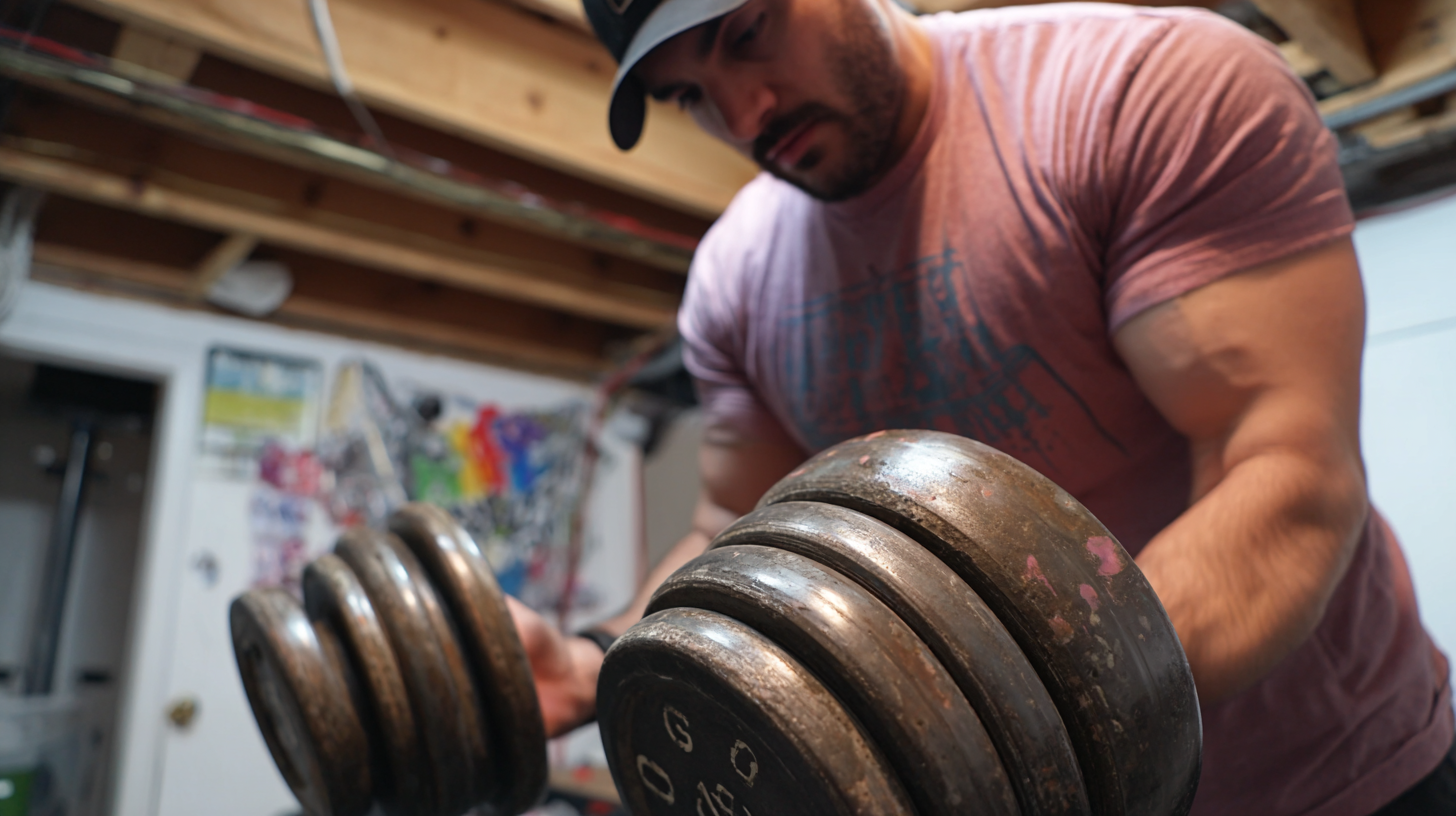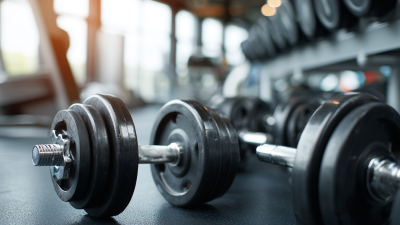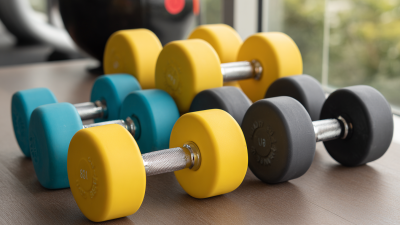In today's fast-paced world, finding time to hit the gym can often feel impossible. However, with the right approach, you can build impressive strength right in the comfort of your home. This guide focuses on the powerful potential of home dumbbells, offering practical strategies to maximize your workouts without needing a full gym setup. Whether you're a beginner looking to get started or an experienced weightlifter wanting to enhance your routine, home dumbbells are versatile tools that can cater to all fitness levels.

We will explore the best exercises to incorporate, the optimal ways to structure your workout, and tips for maintaining motivation. Join us as we delve into the transformative journey of strength training at home, ensuring you achieve your fitness goals effectively and efficiently.
Strength training at home with dumbbells offers numerous benefits that can enhance your overall fitness journey. First and foremost, it provides a convenient way to incorporate exercise into your daily routine without the need for a gym membership. With just a pair of dumbbells, you can perform a variety of exercises targeting different muscle groups, helping to build strength, improve endurance, and promote better posture. This flexibility allows you to tailor your workouts to suit your schedule and abilities, making it easier to stay consistent.
 Tips: To maximize your strength training at home, start with a proper warm-up to prepare your muscles and joints for the workout. Include dynamic stretches and mobility exercises to increase blood flow and reduce the risk of injury. Additionally, focus on maintaining proper form during each exercise; this not only enhances the effectiveness of your workout but also prevents strain.
Tips: To maximize your strength training at home, start with a proper warm-up to prepare your muscles and joints for the workout. Include dynamic stretches and mobility exercises to increase blood flow and reduce the risk of injury. Additionally, focus on maintaining proper form during each exercise; this not only enhances the effectiveness of your workout but also prevents strain.
Another significant advantage of working out with dumbbells at home is the opportunity for progression. Dumbbells allow you to easily adjust the weight you’re lifting, making it simple to challenge yourself as you gain strength. Gradually increasing the weight or altering your reps and sets can lead to continued improvement and prevent your workouts from becoming stale.
Tips: Keep track of your workouts by writing down your weights, sets, and reps. This practice will help you notice your progress over time and motivate you to push your limits. Try varying your routine every few weeks to introduce new exercises and prevent plateauing.
Building strength at home with dumbbells can be both efficient and rewarding. To effectively target major muscle groups, it's vital to incorporate essential dumbbell exercises into your routine. For instance, exercises like the dumbbell bench press, bent-over rows, and lunges are excellent for working the chest, back, and legs, respectively. These foundational movements not only enhance muscle definition but also improve overall functional strength, making everyday activities easier.

Tips: When performing these exercises, focus on maintaining proper form to prevent injuries and ensure effectiveness. Start with a weight that feels manageable, and gradually increase as your strength improves. Engaging your core throughout each movement can also help stabilize your body, allowing for a fuller range of motion and maximizing your workout benefits.
In addition to the basic exercises, incorporating variations such as dumbbell shoulder presses and goblet squats can keep your workouts fresh and challenging. Mixing up your routine not only helps avoid plateaus but also promotes balanced muscle development. Consistency is key, so aim to include dumbbell workouts into your weekly schedule, focusing on strengthening different muscle groups on different days.
When setting up an effective home strength training routine with dumbbells, it's crucial to start with a clear plan. Establish your fitness goals, whether they involve building muscle, toning, or increasing strength. This will guide your exercise selection and help you stay focused. Additionally, aim for a well-rounded routine that targets all major muscle groups, incorporating exercises like bicep curls, tricep extensions, squats, and lunges.
**Tips for Creating an Effective Home Strength Training Routine:**
1. **Schedule Your Workouts:** Treat your home workouts like any other appointment. Set specific days and times each week to maintain consistency. Integrate progressive overload by gradually increasing the weights or repetitions to challenge your muscles continually.
2. **Keep It Balanced:** Ensure your routine includes both upper and lower body exercises. This balance is vital for overall strength and avoids uneven development, reducing the risk of injury. Consider investing in adjustable dumbbells for versatility, allowing you to easily switch weights as needed.
3. **Focus on Form:** Prioritize proper technique over the amount of weight you lift. Poor form can lead to injuries and diminish the effectiveness of your workouts. Take time to learn the movements correctly, and consider tracking your progress to stay motivated and make necessary adjustments along the way.
When using dumbbells for strength training, especially at home, it’s vital to avoid common mistakes that can hinder progress or lead to injury. One major error is maintaining a sloppy form. Proper form is crucial not just for maximizing muscle engagement, but also for preventing injuries. For instance, when performing movements like dumbbell rows or Romanian deadlifts, ensure your spine is neutral and your core is engaged. This helps to stabilize your body and allows you to lift safely and effectively, enhancing your workout quality.
Another common mistake is ignoring pain signals from your body. Many beginners may push through discomfort, assuming it is a normal part of training. However, distinguishing between normal muscle fatigue and pain is essential for avoiding serious injuries. Additionally, neglecting mobility work can impact your strength training effectiveness. Incorporating stretching and mobility exercises into your routine will enhance your range of motion and support overall performance during dumbbell exercises. By being mindful of these common pitfalls, you can create a safer and more productive strength training regimen at home.
| Mistake | Description | Recommendation |
|---|---|---|
| Using Too Much Weight | Beginners often lift heavier weights than they can handle, leading to poor form and injury. | Start with lighter weights and focus on mastering your form before increasing weight. |
| Neglecting Warm-Up | Diving straight into workouts without warming up can lead to strains and injuries. | Always perform a warm-up routine to prepare your muscles and joints for exercise. |
| Ignoring Rest Days | Training too often without rest can lead to overtraining and burnout. | Incorporate rest days into your routine to allow your body to recover and strengthen. |
| Poor Nutrition | Not fueling your body properly can hinder strength gains and recovery. | Ensure a balanced diet with adequate protein and nutrients to support your workouts. |
| Inconsistent Training | Skipping workouts or having an irregular schedule can impede progress. | Create a consistent workout schedule to build strength effectively over time. |
When it comes to building strength at home with dumbbells, progression is key to ensuring that your workouts remain challenging and effective. According to a 2022 report by the American Council on Exercise (ACE), progressive overload—gradually increasing the weight, frequency, or intensity of your workouts—is fundamental to muscle hypertrophy and strength gains. This concept underscores the importance of increasing the resistance of your dumbbell exercises over time, ensuring that your muscles continually adapt and grow.
One effective strategy for progression is the implementation of the two-for-two rule. This principle suggests that if you can complete two extra repetitions of a given exercise for two consecutive workouts, it's time to increase the weight. A study published in the Journal of Strength and Conditioning Research found that participants who adopted structured progression protocols saw a 30% increase in strength over a 12-week period, compared to those who used static weights. By consistently challenging yourself through strategic adjustments to your dumbbell routine, you can keep your home workouts fresh and compelling while optimizing your strength development.






